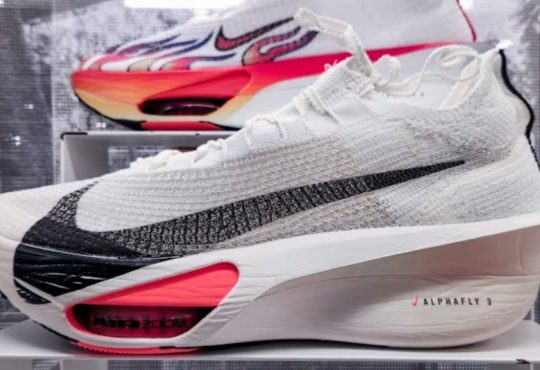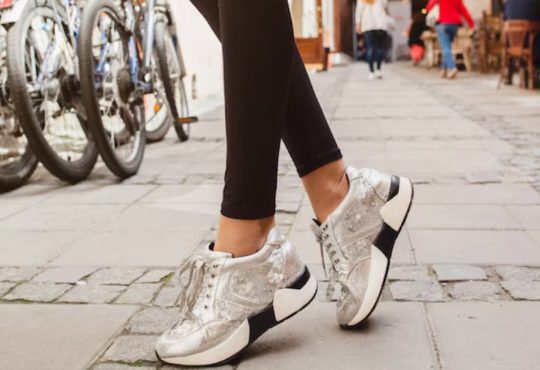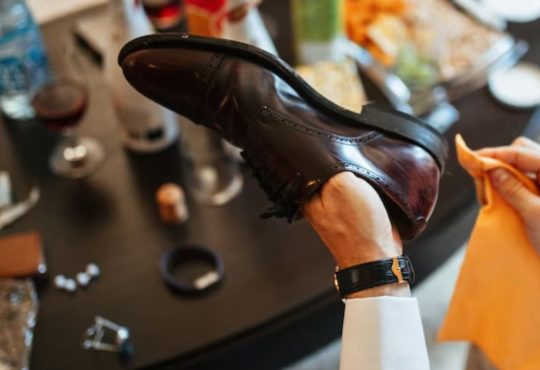In an age dominated by mass production, synthetic materials, and disposable fashion, leather soles continue to hold a unique allure. There’s something unmistakably refined about the gentle echo of a leather sole on polished marble or aged hardwood—a quiet declaration of sophistication that speaks louder than logos. Whether it’s a handcrafted Oxford or a pair of bespoke brogues, leather soles still stand as a symbol of timeless style, technical expertise, and enduring quality.
The enduring appeal of leather soles lies in their blend of tradition, craftsmanship, and functional elegance. Despite rapid advancements in footwear technology, leather soles have maintained a prominent place in shoemaking for centuries. Their origins trace back to ancient civilizations, and their relevance continues in contemporary fashion and high-end craftsmanship. An exploration of their history, construction, and performance reveals the lasting value they offer in both aesthetic and practical terms.
A Walk Through Time: The History of Leather Soles
Hide is arguably among civilization’s most ancient substances, tracing its roots to the dawn of prehistory. Early civilizations like the Mesopotamians, Egyptians, and Greeks tanned hides and fashioned rudimentary footwear to protect their feet. Over time, as craftsmanship evolved and societies became more stratified, footwear became not just functional but symbolic of social status.
In the Roman Empire, leather-soled sandals were the standard for soldiers, while wealthier citizens enjoyed more intricate, stitched footwear. By the Middle Ages, cobblers across Europe refined their techniques, creating stitched and nailed soles that lasted longer and provided greater comfort.
But it was during the 19th century Industrial Revolution that the leather sole began to shine in the spotlight of high-end shoemaking. With the invention of the Goodyear welt—a process still used in today’s best dress shoes—shoemakers could craft shoes that were both elegant and repairable. Leather soles became synonymous with class, and by the early 20th century, a gentleman wasn’t properly dressed without a pair of polished leather-soled shoes.
Understanding the Craft: How Leather Soles Are Made
To appreciate leather soles, it’s essential to understand the meticulous process behind their creation. In contrast to rubber outsoles, typically shaped through industrial molding, leather soles emerge through a fusion of natural elements, patience, and handcrafted expertise.
1. Tanning the Leather
The journey begins with full-grain cowhide, typically sourced from regions known for high-quality hides, like France, Germany, or the United States. The tanning process—which transforms raw animal skin into durable leather—can take weeks to months, depending on the method used.
Vegetable tanning is the most traditional approach and a favorite among heritage shoemakers. It involves soaking the hides in natural tannins derived from tree bark and other organic materials. This method results in a firm, water-resistant leather that ages beautifully over time, developing a patina that’s unique to its wearer.
2. Cutting and Shaping
Once tanned, the leather is cut into sole shapes using dies or by hand. The thickness of the sole is carefully calibrated, often with multiple layers stacked together for added durability and structure.
3. Stitching and Construction
The leather sole is typically attached to the upper using construction. The leather sole is generally secured to the upper through construction techniques, including:
- Goodyear welting – A time-honored method involving a welt stitched to both the upper and the sole, allowing for easy resoling and enhanced durability.
- Blake stitching – A sleeker, more flexible construction where the sole is directly stitched to the upper, resulting in a lighter and closer-fitting shoe.
- Hand welting – A traditional, labor-intensive process done entirely by hand, prized for its strength and craftsmanship.
- Cementing – A quicker method using strong adhesives to bond the sole to the upper, often used in more affordable or mass-produced leather-soled shoes.
Each technique influences the shoe’s overall lifespan, pliability, and ease of maintenance.
Why Leather Soles Still Matter Today
Let’s be honest: leather soles aren’t cheap, and they’re not indestructible. So why do people still swear by them? Here’s why they continue to earn their place in luxury and fine footwear.
1. Unmatched Breathability
Leather is a natural, porous material. This means it allows air to pass through and moisture to escape—a huge advantage for keeping your feet dry and comfortable during long hours of wear. Rubber and synthetic soles tend to trap heat and sweat, which can lead to odor and discomfort over time.
2. Superior Comfort Over Time
At first, leather soles might feel stiff. But like a good leather jacket or a pair of raw denim jeans, they break in over time and mold to the shape of your foot. This custom-fit provides exceptional comfort and support, particularly in shoes designed for all-day wear.
3. Elegance in Every Step
There’s a reason luxury brands—from Church’s to John Lobb to Berluti—continue to favor leather soles. The slim silhouette, clean lines, and natural finish of leather add an understated elegance to any shoe. And yes, there’s also that satisfying “click-clack” sound—what some call the “gentleman’s echo”—which exudes quiet confidence.
4. Repairability and Sustainability
High-quality leather-soled shoes are built to last. And when they eventually wear down, they can be resolved—often multiple times—thanks to their construction. This makes them far more sustainable than cheaper, glue-based alternatives that end up in landfills.
Not Without Trade-Offs: The Downsides of Leather Soles
While leather soles are admired for their elegance and intelligence, they are not without limitations. Here’s what you should consider:
1. Slipperiness
One of the most common complaints about leather soles is their lack of grip, especially on wet or smooth surfaces. This is particularly true of new soles before they develop any traction. Many wearers opt for topy (rubber) sole protectors to mitigate this issue.
2. Faster Wear on Rough Surfaces
If you live in a city with lots of concrete, cobblestone, or rainy weather, your leather soles may wear out quicker than rubber alternatives. Leather soles shine in boardrooms and formal settings—not necessarily on daily commutes or hiking trails.
3. Cost and Maintenance
Quality leather-soled shoes can be pricey upfront, and they require care: rotation, conditioning, and timely resoling. However, for those who view their wardrobe as an investment rather than a revolving door of trends, the long-term value is hard to beat.
Caring for Leather Soles: Tips for Longevity
Trethey’ll leather soles right, and they’ll serve you here’s years—maybe even decades. Here’s how:
1. Rotate Your Shoes
Give your shoes a rest between wears. Leather needs time to dry and breathe, especially after a long day.
2. Use Shoe Trees
Cedar shoe trees preserve the structural integrity of footwear while absorbing residual moisture, minimizing wear to both the sole and insole over time.
3. Avoid Excess Moisture
Leather is watyou’reistant, not waterproof. If you’re caught in a downpour, let your shoes dry naturally (away from direct heat) and consider applying leather sole guards if wet conditions are common where you are.
4. Resole When Necessary
Don’t wait until holes appear. Resolving your shoes early can improve and preserve the shoe’s overall integrity.
Leather Soles vs. Rubber Soles: A Quick Comparison
Leather Soles
- Appearance: Sleek, elegant, and ideal for formal wear; preferred by luxury shoemakers.
- Breathability: Naturally porous, allowing airflow and reducing sweat buildup.
- Break-in & Comfort: Molds to your foot over time for a custom fit and superior long-term comfort”t.
- Sound: P”produces that classic “click-clack” sound—subtle and sophisticated.
- Maintenance: Requires occasional resoling and careful rotation, especially in wet weather.
- Grip: It can be slippery, particularly when new or wet. Some add rubber toppers for traction.
- Longevity: High-quality pairs can last years with proper care and professional resoling.
Rubber Soles
- Appearance: Generally bulkier and more casual; not as refined as dress shoes.
- Breathability: Less airflow, which can cause feet to sweat more over long wear.
- Break-in & Comfort: More cushion doesn’t fit out of the box, but it doesn’t mold to the foot naturally.
- Sound: Quieter and more muted—good for stealth, less so for elegance.
- Maintenance: Durable and weather-resistant; great for daily wear with minimal upkeep.
- Grip: Excellent traction on most surfaces, including wet or icy terrain.
- Longevity: Often outlasts leather soles on rough terrain but is harder to repair or resole.
Who Should Wear Leather Soles?
While everyone can benefit from owning a quality pair of leather-soled shoes, certain groups will especially appreciate them:
- Business professionals: For formal meetings, interviews, or office settings, leather soles signal polish and attention to detail. You’re an eventgoer: Whether you’re a guest or the groom, nothing beats a leather sole for formal flair.
- Footweayou’reusiasts and collectors: If you’re into craftsmanship, heritage brands, and slow fashion, leather soles are a muyou’reyone seeking longevity. If you’re tired of tossing out cheaply made shoes every year, a good pair of leather-soled shoes is a long-term investment.
Leather Soles and Sustainability: A Surprising Perspective
At first glance, leather might not seem like a sustainable material. However, when sourced ethically and used in durable, repairable products, it actually contributes to a more circular fashion economy. Many high-end shoemakers today are working with vegetable-tanned leather from certified tanneries, using by-products from the meat industry and minimizing waste.
Plus, the longevity of a well-made leather-soled shoe—often lasting 10+ years with proper care—can easily outweigh the environmental impact of manufacturing five to ten disposable synthetic pairs.
A Step into the Future: Will Leather Soles Survive?
In a world where comfort tech, rubberized designs, and sneaker-style hybrids dominate, the future of leather soles may seem uncertain. But like mechanical watches in the age of smartwatches, leather soles are less about utility and more about tradition, artistry, and the emotional connection between maker and wearer.
Rather than disappearing, leather soles are finding new relevance among modern artisans, luxury brands, and even sneaker companies with expertise in leather components. There’s” also a growing “g movement around “slow fashion,” where consumers prioritize quality over quantity and sustainability over speed—and leather soles fit that philosophy beautifully.
The Enduring Elegance of Leather Soles
Leather soles are northernmost a choice of material—they’re a nod to centuries of craftsmanship, a marker of timeless taste, and a quiet rebellion against the disposable culture of modern fashion. For those who value authenticity, detail, and things that get better with time, leather soles offer you every step.
So, whether you’re dressing for the boardroom or the ball that’s just building a wardrobe that’s built to last, consider investing in leather-soled shoes. You won’t be stepping into elegance—you’ll be walking in the footsteps of generations of artisans and style icons, and you dial rebels.
Let me know if you’d like this adapted for a specific product, tailored to a niche audience (like heritage menswear fans, wedding clients, or eco-conscious buyers), or converted into a product collection intro. I’ve got soles to spare and words to match!





